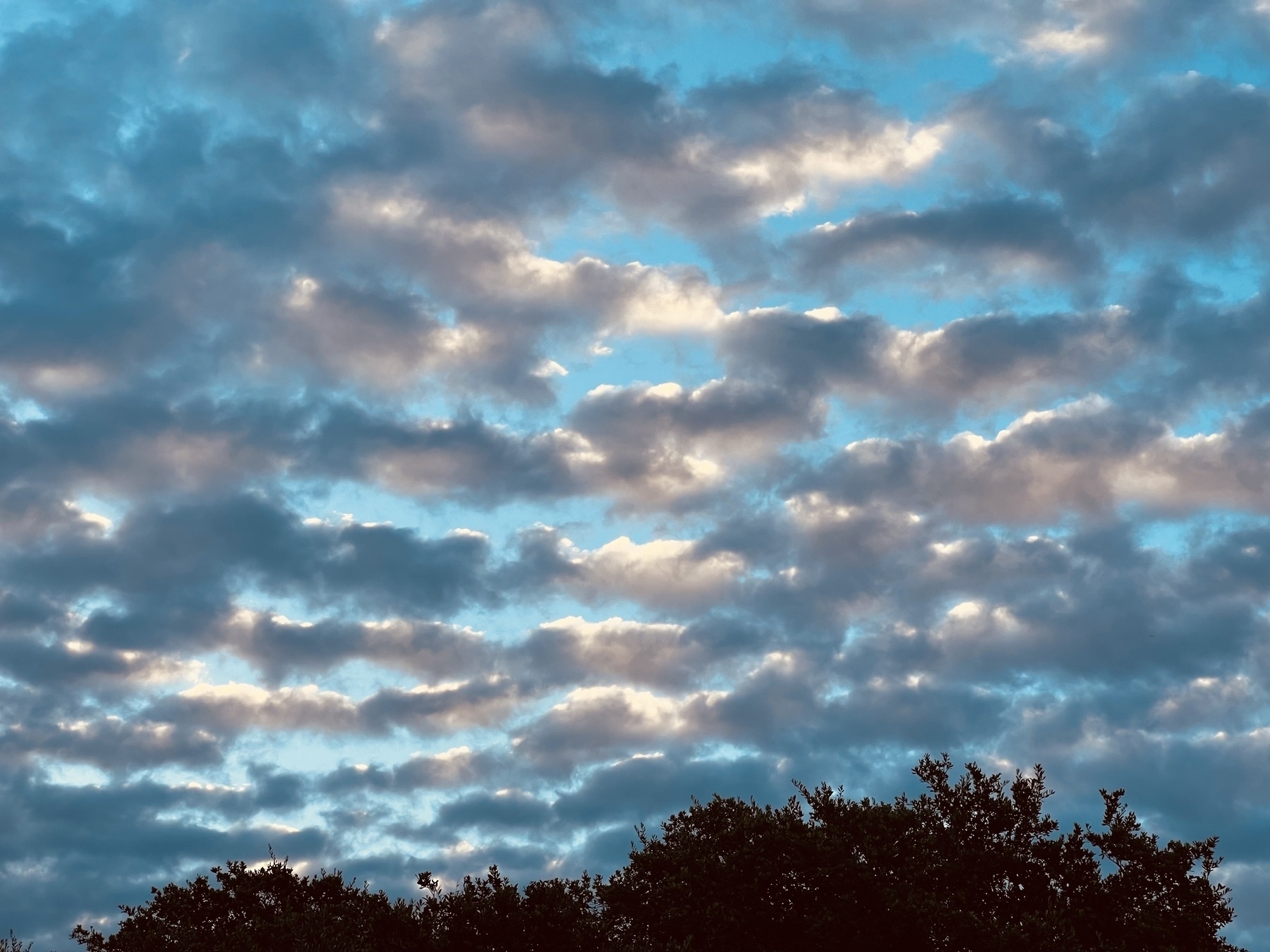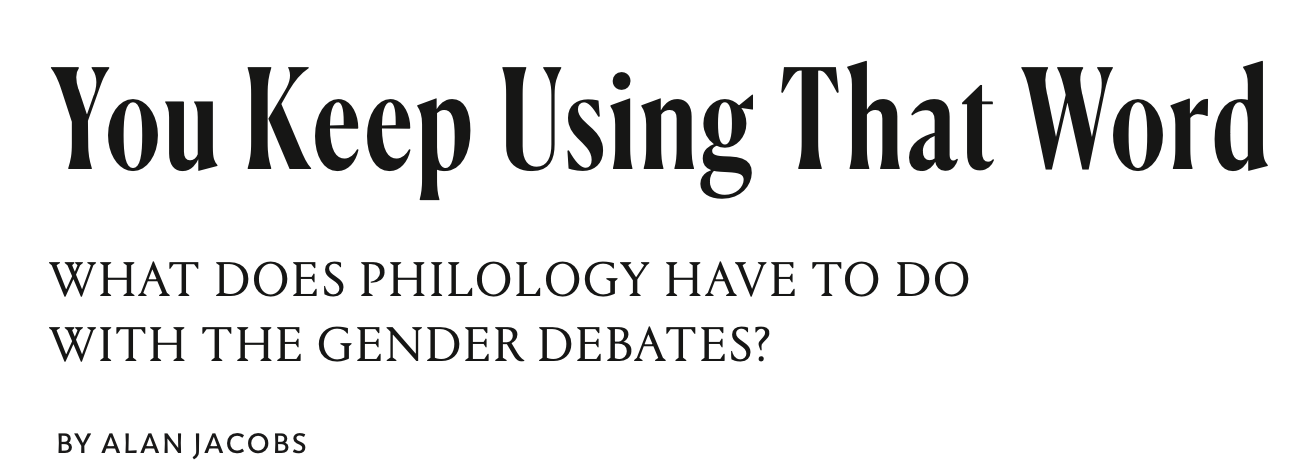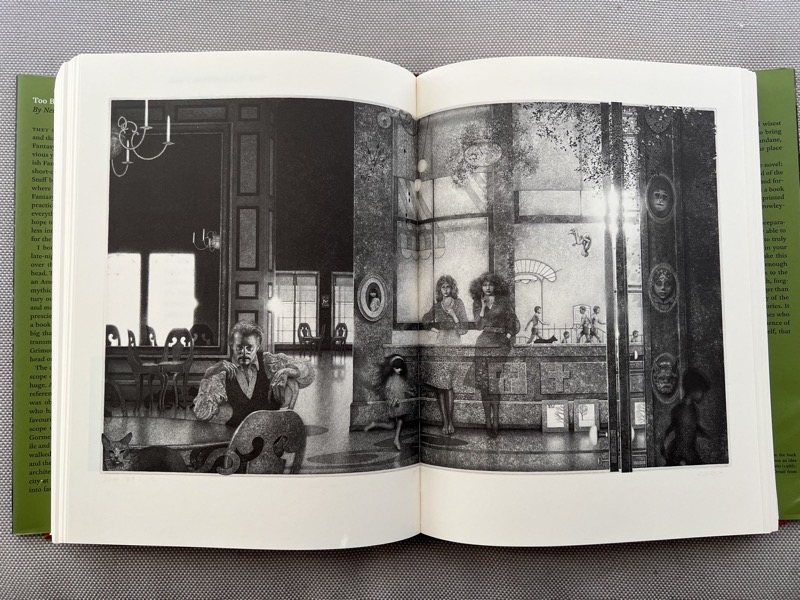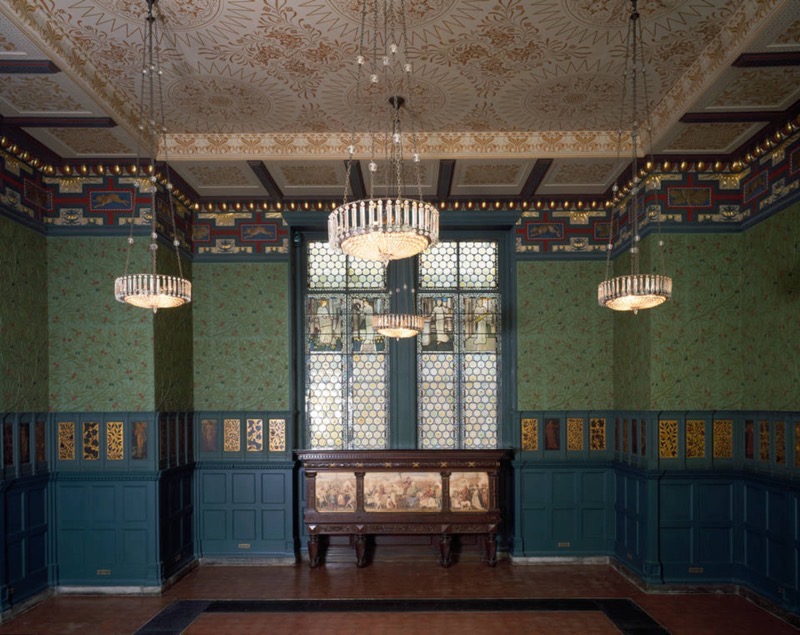
David Thomson: “The most daring novelty in Citizen Kane was not its deep-focus photography, overlapping sound, or flashback structure (though those things are truly difficult). The greater challenge was in saying, Don’t expect one viewing to settle this — or even several. For the mystery here is the most precious thing. Unknowability is close to where this film is leading. For 1941, that was not just daring or innovative; it was close to a denial of the entertainment medium.”
Mateus Asato plays “Blessed Assurance.”
New issue of the newsletter out today. I do enjoy making my newsletter.
At its peak, Reader had just north of 30 million users, many of them using it every day. That’s a big number — by almost any scale other than Google’s. Google scale projects are about hundreds of millions and billions of users, and executives always seemed to regard Reader as a rounding error. Internally, lots of workers used and loved it, but the company’s leadership began to wonder whether Reader was ever going to hit Google scale. Almost nothing ever hits Google scale, which is why Google kills almost everything.
I was never a big Reader user, in part because I wasn’t interested in the social dimension of the app, and in part because I was a very early and loyal NetNewsWire adopter. I fiddled with it from time to time. But if Google had stuck with it, I think I might have become a serious user when Twitter began to decompose.
The reasons for the Nobel Committee’s snub [of Milan Kundera], which occurred at the height of the award’s geopolitical if not literary significance, are not hard to fathom. Most obviously, Kundera was never particularly interested in or engaged by politics. Instead, his work was a passionate defence of the right to pursue one’s own individual desires and lusts against bureaucratic maniacs of whatever stripe who wished to colonise individual experience on behalf of the state. To his critics on both the Right and the Left, Kundera’s stance was borderline immoral, not to mention hopelessly bourgeois. While the Left preferred Che and the Right preferred Solzhenitsyn, Kundera insisted on the human right to be left alone.
Taken a few days ago, when we still had clouds

same

Smoke ‘em if you got ‘em

my new title
I ain’t going nowhere. I’m still here at Baylor’s Honors College, and I’ll continue, mostly, to do what I’ve been doing. But I have a new job title, and I want to explain what that means for me.
My new title, which is sorta bolted on to the old one, is – and I’m gonna need to take a deep breath here – the Jim and Sharon Harrod Chair of Christian Thought and Distinguished Professor of the Humanities in the Honors Program of Baylor University. That, friends, is a mouthful and no mistake.
When I was invited to apply for this newly-created position, I hesitated. I hesitated simply because I love the humanities – all the disciplines of humanistic learning, and all the ways they interact with one another – and I love the idea of professing a body of learning, a way of thinking, that is so often neglected, despised, and, by many of its soi-disant adherents, betrayed. I liked my old job title; through it I could stand for something I want to stand for. I didn’t want to give it up. (As it turns out, I get to keep it! – but I didn’t at the outset know how Baylor would handle the whole business.)
That said, I have also spent much of my career trying to demonstrate to readers the enduring power and relevance of the 2000-year history of Christian thought. My first book was largely about W. H. Auden’s discovery of the richness of that complicated and sometimes contradictory tradition; my second monograph tried to imagine how the challenges of literary reading and interpretation could be navigated with the aid of Augustine’s De Doctrina Christiana (297–426 AD). And I have gone on in this vein ever since, as best I’ve been able. I hope to continue as long as I can.
I’ll be giving an inaugural lecture at some point in the coming year, and I’ll probably post it here.
Also, I’ve been talking with my bosses, Doug Henry and Elizabeth Corey, about a signature course for the chair – or at least a course that suits the ways I can exemplify the character and the purpose of the chair, and honor the generosity of the Harrods. (Some later holder of the chair, from some discipline other than mine, will surely do something totally different.) To conclude this post, here’s my initial sketch:
The Christian Renaissance of the 20th Century
By the end of the 19th century, close observers of elite culture were confident that Christianity was soon to be dead – at least among the artists and intellectuals of the Western world. Those observers were wrong. The twentieth century witnessed a great intellectual and artistic flourishing among Christians, a flourishing that altered the entire cultural landscape of the Western world. In this class we will explore this signal development. Figures studied may include:- Writers of fiction: J. R. R. Tolkien, Flannery O’Connor, Shūsaku Endō
- Poets: T. S. Eliot, W. H. Auden, Geoffrey Hill
- Composers: Olivier Messiaen, Arvo Pärt, John Tavener
- Philosophers: Jacques Maritain, G. M. Anscombe, Alvin Plantinga
- Theologians: Karl Barth, Simone Weil, C. S. Lewis
- Visual artists: Georges Rouault, Arcabas, Mako Fujimura
- Filmmakers: Robert Bresson, Terrence Malick, Martin Scorsese
(Obviously I could replace all of those figures with others and still make the thing work; the multitude of choices just shows how vast in scope this renaissance has been.)
personal organization
Here’s my one piece of advice about personal organization: (calendars, tasks, planning, tracking): Think hard about your needs, pick a system, and then do not under any circumstances change it until at least one full year has passed. When you discover that your chosen system has some flaw — which you will — you’ll be tempted to change to a different system that doesn’t have that particular flaw. But: the new system will have other flaws, because no system is perfect, and those may be worse than the one you’re dealing with now. And you can lose vast tracts of time trying to find the (inevitably nonexistent) perfect system, which will make it harder, not easier, for you to get things done.
Moreover, you’ll need several months, at a minimum, to fine-tune whatever system you’re using to meet your needs. You won’t really know its weaknesses, or its strengths, until then. After a year, even if you’re frustrated by some things, you’ll be using it well, and can make a rational decision about whether to exchange it for something else. But remember: should you change, it’ll take you a long time to learn your new system. Are you sure you want to invest that time?
Some people are sure. And there can be value in shaking up your familiar habits — I do that myself sometimes. But the better you know a system, the more accurately you can calculate the costs and benefits of abandoning it.
Chisos Mountains, Big Bend National Park. I’ve been longing to get back there but right now it’s too dang hot.

starting from zero
The young architects and artists who came to the Bauhaus to live and study and learn from the Silver Prince talked about “starting from zero.” One heard the phrase all the time: “starting from zero.” Gropius gave his backing to any experiment they cared to make, so long as it was in the name of a clean and pure future. Even new religions such as Mazdaznan. Even health-food regimens. During one stretch at Weimar the Bauhaus diet consisted entirely of a mush of fresh vegetables. It was so bland and fibrous they had to keep adding garlic in order to create any taste at all. Gropius' wife at the time was Alma Mahler, formerly Mrs. Gustav Mahler, the first and foremost of that marvelous twentieth-century species, the Art Widow. The historians tell us, she remarked years later, that the hallmarks of the Bauhaus style were glass corners, flat roofs, honest materials, and expressed structure. But she, Alma Mahler Gropius Werfel — she had since added the poet Franz Werfel to the skein — could assure you that the most unforgettable characteristic of the Bauhaus style was "garlic on the breath.” Nevertheless! how pure, how clean, how glorious it was to be ... starting from zero!
— Tom Wolfe, From Bauhaus to Our House
The new issue of Religion and Liberty features a long essay by Christine Rosen criticizing the we-have-nothing-to-conserve case presented by Jon Askonas in an essay I discuss here and here. Two points from me:
One: Rosen points out that Askonas’s hope for taking power through “a serious program of technological development” is just another version of Mark Zuckerberg’s “move fast and break things” — a model of action which has repeatedly proven much better at destroying than building. Another way to put this is to borrow a phrase from N. S. Lyons and say that the members of several recent post-conservative movements – as exemplified by Askonas’s essay, but also by Patrick Deneen’s call for “regime change,” and by several more extreme calls from some corner of the right to Blow It All Up – tend to be “change merchants”:
Whether an academic, a journalist, a financial analyst, or a software developer, a member of this Virtual class makes his living — and, indeed, establishes his social and economic value — by manipulating, categorizing, and interpreting symbolic information and narrative. “Manipulate” is an important verb here, and not merely in the sense of deviousness. Such an individual’s job is to take existing information and change it into new forms, present it in new ways, or use it to tell new stories. This is what I am attempting to do as a writer in shaping this article, for example.Maybe I shouldn’t include either Askonas or Deneen in this description, because Askonas has walked back his strongest claims, and some reviewers say that Deneen does the same in the latter portions of Regime Change. (I can’t say for sure, because I haven’t yet read it, but the more hard-nosed hard-right critics of the book chastise Deneen for not following through on his more extreme denunciations of the System.) But as a general rule: To be a successful change merchant you have to include, as a necessary prelude to your sales pitch, the claim that nothing you’ll destroy along the way to your innovation is worth preserving. (Starting from zero!) That is, the genuine change merchant will always say that we have nothing to conserve, and the person who genuinely believes we have nothing to conserve will always be either a change merchant or a victim of despair (or maybe both).Members of this class therefore cannot produce anything without change. And they cannot sell what they’re producing unless it offers something at least somewhat new and different. Indeed, change is literally what they sell, in a sense, and they have a material incentive to push for it, since the faster the times are a-changin’ in their field, or in society, the more market opportunity exists for their products and services. They are, fundamentally, merchants of change.
Many changes are, of course, necessary, and others are not perhaps necessary but are good or useful or beautiful or all of the above. In my judgment, the people best placed to implement the better kinds of change are not neophiles, who are impatient with anything that exists and desirous to replace it with whatever happens to occur to them, but rather those with a well-founded appreciation for what already exists and from that very appreciation develop a desire to preserve, sustain — and improve. (As Wolfe points out, the neomania of the Bauhaus movement led to a situation in which “Every child goes to school in a building that looks like a duplicating-machine replacement-parts wholesale distribution warehouse.”) One of Burke’s most famous lines is germane here: “A state without the means of some change is without the means of its conservation. Without such means it might even risk the loss of that part of the constitution which it wished the most religiously to preserve.” Conservation and change are not opposites, but, in what that great conservative Albus Dumbledore calls “the well-organized mind,” complementary impulses.
Two: Again, some of those who say that there’s nothing to conserve will qualify that statement when challenged; but there are many among us who think it’s really true. And when I hear that, I find myself thinking about a famous passage from Henry James’s study of Nathaniel Hawthorne:
The negative side of the spectacle on which Hawthorne looked out, in his contemplative saunterings and reveries, might, indeed, with a little ingenuity, be made almost ludicrous; one might enumerate the items of high civilization, as it exists in other countries, which are absent from the texture of American life, until it should become a wonder to know what was left. No State, in the European sense of the word, and indeed barely a specific national name. No sovereign, no court, no personal loyalty, no aristocracy, no church, no clergy, no army, no diplomatic service, no country gentlemen, no palaces, no castles, nor manors, nor old country houses, nor parsonages, nor thatched cottages nor ivied ruins; no cathedrals, nor abbeys, nor little Norman churches; no great Universities nor public schools — no Oxford, nor Eton, nor Harrow; no literature, no novels, no museums, no pictures, no political society, no sporting class — no Epsom nor Ascot!It turns out that there’s a certain kind of person who looks at the world we’re living in and thinks: No legitimate government, no useful laws, no worthwhile political acts or actors; no schools, no books, no skills of reading or writing or mathematics or art-making; no charitable organizations that serve people in need; no churches, no inspiring sermons, no beautiful liturgies, no memorable hymns; no national forests and parks, nor well-tended fields; no beautiful architecture, no thriving neighborhoods — no families! Nope. Not a thing to conserve. Those who went before us left us absolutely nothing of value. What can we do but start from zero, says the true change merchant, with me as your guide?
academic bullshit
My estimable friend Dan Cohen:
Maybe AI tools can help to combat their unethical counterparts? SciScore seeks to improve the reliability of scientific papers by analyzing their methods and sources, producing a set of reports for editors, peer reviewers, and other scientists who want to reproduce an experiment. Ripeta uses AI trained on over 30 million articles to identify “trust markers” within a paper’s dense text. Using new AI computer vision tools, Proofig takes aim at falsified images within academic work.
But fighting AI with AI assumes a level of care and attention that are increasingly scarce resources in academia. As scholarly publishers will admit, peer reviewers are harder and harder to come by, as journals proliferate and there are greater pressures on the time of every professor. It’s more productive to crank out your own work than to correct the work of others. Professors who are concerned about their students using ChatGPT to create plausible-sounding essays might not look over their shoulders at their own colleagues using more sophisticated tools to do the same thing.
If they — and we — fail to stem the tide of AI-generated academic work, that very work will come into question, and one of the last wells of careful writing, of deep thought, of debate supported by evidence, might be fatally poisoned.
All of Dan’s concerns here are legitimate and serious … but I also think there’s another side to this, at least potentially. I’ve written before about the ways that ChatGPT and the like are revealing the unimaginative, mechanical nature of so many assignments we college teachers create and administer. In that post I wrote, “If an AI can write it, and an AI can read it and respond to it, then does it need to be done at all?“ Might we not ask the same question about our research, so much of which is produced simply because publish-or-perish demands it, not because of any value it has either to its authors or its readers (if it has any readers)?
Countless times in my career I have heard people talk about their need to publish research — to get tenure or promotion — in an AI-like pattern-matching mode: What sort of thing is getting published these days? What terms and concepts are predominantly featured? What previous scholarship is most often cited? And once they answer those questions, they generate the appropriate “content” and then fit it into one of the very few predetermined structures of academic writing. And isn’t all this a perfect illustration of a bullshit job?
Yes, I’m worried about what AI will do to academic life — but I also see the possibility of our having to face the ways in which our work, as students, teachers, and researchers, has become mechanistic and dehumanizing. And if we can honestly acknowledge the conditions, then maybe we can do something better.
Megan McArdle, with a thought-provoking argument: “Once Musk readmitted the views and people they abhor, the left began abandoning the common space for smaller, more ideologically homogenous services where it is easier to police one another, but harder to police the discourse. And the more peripheral progressives become, the more institutions will grope their way back to the middle of the road.”
This interview with A. G. Sulzberger on the Dispatch Podcast is fascinating. So informative about both the challenges and the opportunities for journalism today.
Forthcoming in Comment

Little, Big
My friend Adam Roberts wrote recently about John Crowley’s Little, Big, which is (a) one of my very favorite novels and (b) a book I have never written about. I suspect that I've never written about it precisely because it means so much to me. One day perhaps I will get to the bottom of this. But for now I just want to make a few comments.
One: Adam thinks the book is a version of baroque, but I don’t think I agree. My inclination is to say that there are forms of elaboration other than the baroque, and Crowley dwells in one of those traditions. His imagination, especially his visual imagination, seems to me to arise from the vision of art that begins with the Pre-Raphaelites, moves on through William Morris, and culminates in the Arts & Crafts movement, which in the first two decades of the twentieth century — the period in which Edgewood was built — was a very big thing in the upstate-New-York world to which Crowley is always drawn. (The Aegypt books are set there too.) Edgewood is surely a house in this tradition, though in its decorated rather than its spare aspect. If you imagine Richard Norman Shaw’s Cragside sitting in a heavily forested corner of the Catskills I think you might envision Edgewood correctly.

Also, the women of Little, Big are often very much in the Pre-Raphaelite “stunner” mode. (Primarily the Elizabeth Siddall cascading-redhead type rather than the Jane Morris darkly-brooding type.) Cf. Rossetti’s The Beloved, which could be a depiction of the enthronement of Daily Alice:

Peter Milton’s illustrations for the rather magnificent 40th anniversary edition of the book capture some of the feel of the novel, though with an Art Deco tinge that might not be elaborate enough:

That’s not wrong, exactly, but I think it’s missing the density of detail present in so many Pre-Raphaelite paintings and William Morris designs, e.g. the Green Dining Room:

I think if you stripped the Pre-Raphaelite visual world of its medievalism — there ain’t no medieval culture here in the Americas — you’d be getting close to the visual aesthetic of Little, Big.
Two: I think almost the whole of Crowley’s imagination — in his fantasies, though not in his many non-fantastic writings — derives from two books, both of them by Frances Yates: The Art of Memory and The Rosicrucian Enlightenment. The first is a book about making the events and experiences and encounters of the past meaningful and coherent; the second is a book about achieving a nirvana, a wholly enlightened consciousness. The Chymical Wedding of Christian Rosenkreutz is re-enacted or re-interpreted several times in Crowley’s work, including the marriage of Smoky and Daily Alice. (Colin Burrow, in an essay that Adam cites, notes this influence and thinks that current scholarly skepticism about Yates’s arguments creates a “big problem” for Crowley’s fiction, though I don’t know why that would be. Surely works of literary art don’t need to be grounded in sound scholarship to be good stories. The discrediting of the Ptomelaic cosmos doesn’t make the Divine Comedy less compelling.)
It may be that Crowley sees us as having to choose between the two visions of Yates’s two books: that is, we can have a history that takes beautiful form or a beatific vision of total Meaning. Those granted nirvana leave their history behind, as the fairies leave behind Edgewood; that it is “a house made of time” is why they must leave it. You could say that Edgewood is the real protagonist of the story because it enables enlightenment for the fairies and for Smoky the completion of his Tale. And so at the end it runs on, telling its story because it doesn’t know how to do anything else, though both of its audiences have departed. I don’t know anything lovelier in literature than the final paragraph of Little, Big, a book that does not begin but rather ends with “once upon a time.”
(There are, I think, three chief sources of image and myth in Crowley’s fantasies: the Arts & Crafts movement, the Rosicrucian Enlightenment, and one more: the counterculture of the Sixties, which I think Crowley sees as, at its best, inheriting those earlier movements — but never quite laying firm hold on them. Swerving from what it could have been and should have been. But that’s more of a theme in the Aegypt books than Little, Big.)
Three: Little, Big is full of Sehnsucht, it is a “search for the blue flower” story, and I don’t know any other book that better depicts this experience. (I don’t agree with Burrow that such a fantasy is “a conscious substitute for the magic in which you don’t quite believe any more”; I think it’s in no way a substitute, but a pointer towards something that necessarily remains always out of reach.) I also think — and this is not unrelated — that Little, Big is an illustration of the fact that for us mortals “death is the mother of beauty”: Smoky’s apprehension of the Tale is shaped wholly by the fact that he will not inherit it, is not made to inherit and inhabit it, but through helping it to come to be he plays a part that only an outsider to its full enactment can play. It is beautiful to him in a way that it cannot be to its participants; that is its gift to him. There is an inevitable asymmetry in his marriage which somehow make it stronger and more wonderful rather than weaker: he loves Daily Alice differently than she loves him. She occupies almost the whole of his short life; he can be to her only a moment, though perhaps the dearest moment, in an endless one. (It is very sweet to me that she and only she knows where he is buried.)
I think by calling attention to this asymmetry he remedies the biggest defect in The King of Elfland’s Daughter: Dunsany never acknowledges that by bringing the whole of Erl into Elfland he has taken away the very thing that makes Lirazel ache for her husband and family: their mortality. Blake’s “Eternity is in love with the productions of time” is the mirror-image of Sehnsucht, and Crowley gets that, while Dunsany, I think, does not.
I tried AudioPen today. If you want to have your own words converted into the bland, characterless, impersonal, inhuman anti-style of bureaucracies and HR departments, this is the app for you.
“Now Angus, be still, your breeder wants a nice portrait of you.”

